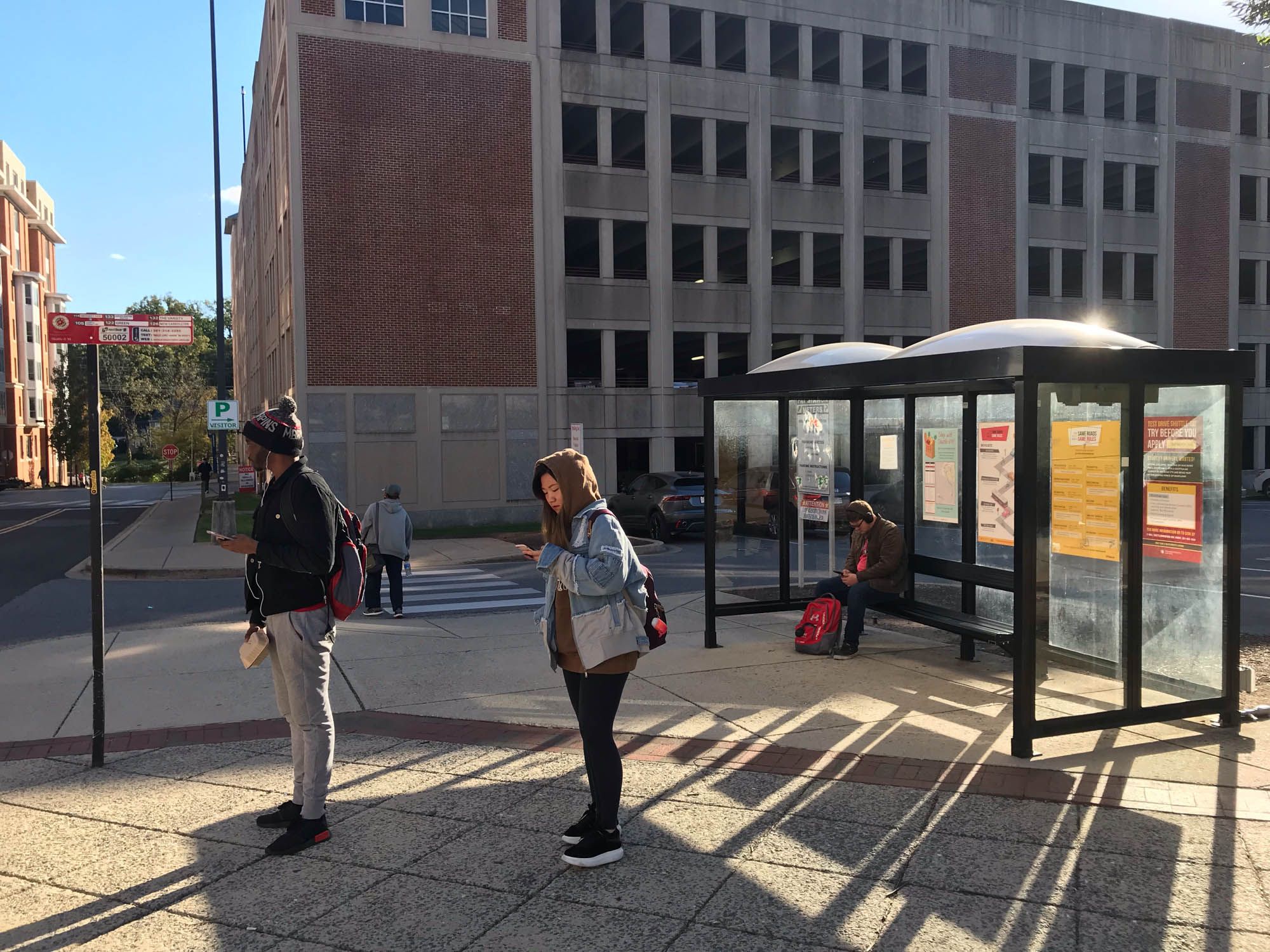In an effort to address student safety concerns, the University of Maryland’s SGA voted Wednesday to support a program that would build two solar-powered bus terminals, with the potential to construct more across the campus.
The bus stops would have solar panels installed on top of them, which would remain lit for up to six hours after dusk. After those six hours, the terminals would operate by motion-sense brightening when a student comes near.
The need for this project stemmed from SGA’s safety walk earlier this month. Members trekked around the campus with city and university officials to determine which areas pose a safety risk to students.
Safety walk attendees found a variety of issues — among them a lack of sidewalk access and not enough waste bins, said Ro Nambiar, SGA’s Student Affairs Vice President. But the lack of lighting was the greatest concern.
“I knew there was issues with lighting, and since currently I live off-campus, it was kind of selfish,” said David Rekhtman, the computer, mathematical and natural science representative who sponsored the bill. “And so I said, ‘You know, there needs to be more lighting — especially at bus stops.’”
[Read more: UMD SGA will offer bus rides for early voting in the midterms]
The motion passed 31-0, with three abstentions. The pilot program, if approved by the Student Facilities Fund subcommittee, will allow the terminals to be tested at two locations on the campus. Rekhtman said he expects a decision from the subcommittee in December.
The two locations will soon be decided by the university’s Department of Transportation Services, said Rekhtman, a sophomore biochemistry major.
After he talked to students at the safety walk who had similar concerns, Rekhtman decided to move forward with the proposal.
DOTS will decide which bus stops will be part of the pilot program by December, Rekhtman said. He had been working with DOTS before the vote, and the department had signed off on the proposal before the SGA voted to support the program.
[Read more: After five years, SGA is bringing back its #WTFUMD program]
The project — which consists of two solar panels and their installations — will cost a total of $3,880, which will come from the Student Facilities Fund, according to the proposal. The fund is pooled from the mandatory fees paid by students every semester.
“Especially with a big campus like ours, whether it’s going to see a friend or going to an event, it can be a 15-minute walk across campus,” said SGA president Jonathan Allen, a senior government and politics major. “And certain areas are definitely not as well-lit as others.”
With the new bus terminals, Nambiar hopes that students will feel more comfortable walking late on the campus.
“I know when I walk back from the library at like 3 or 4 a.m., it’s so dark,” said Nambiar, a senior public health science major.
She added that the lighting systems could benefit students who don’t ride the buses, too.
“Just walking past it and having that motion sensor go on, I think that will just illuminate the road and the path ahead,” she said.
Once Rekhtman receives the funds from the Student Facilities Fund, materials will be ordered, DOTS will start construction, and the two groups will monitor the pilot stops every three months — according to the agenda.
If all goes well, these bus stops will be installed all over the campus, Rekhtman said.
“Hopefully people like it and hopefully people feel safer,” he said, “and then we are able to expand it.”



